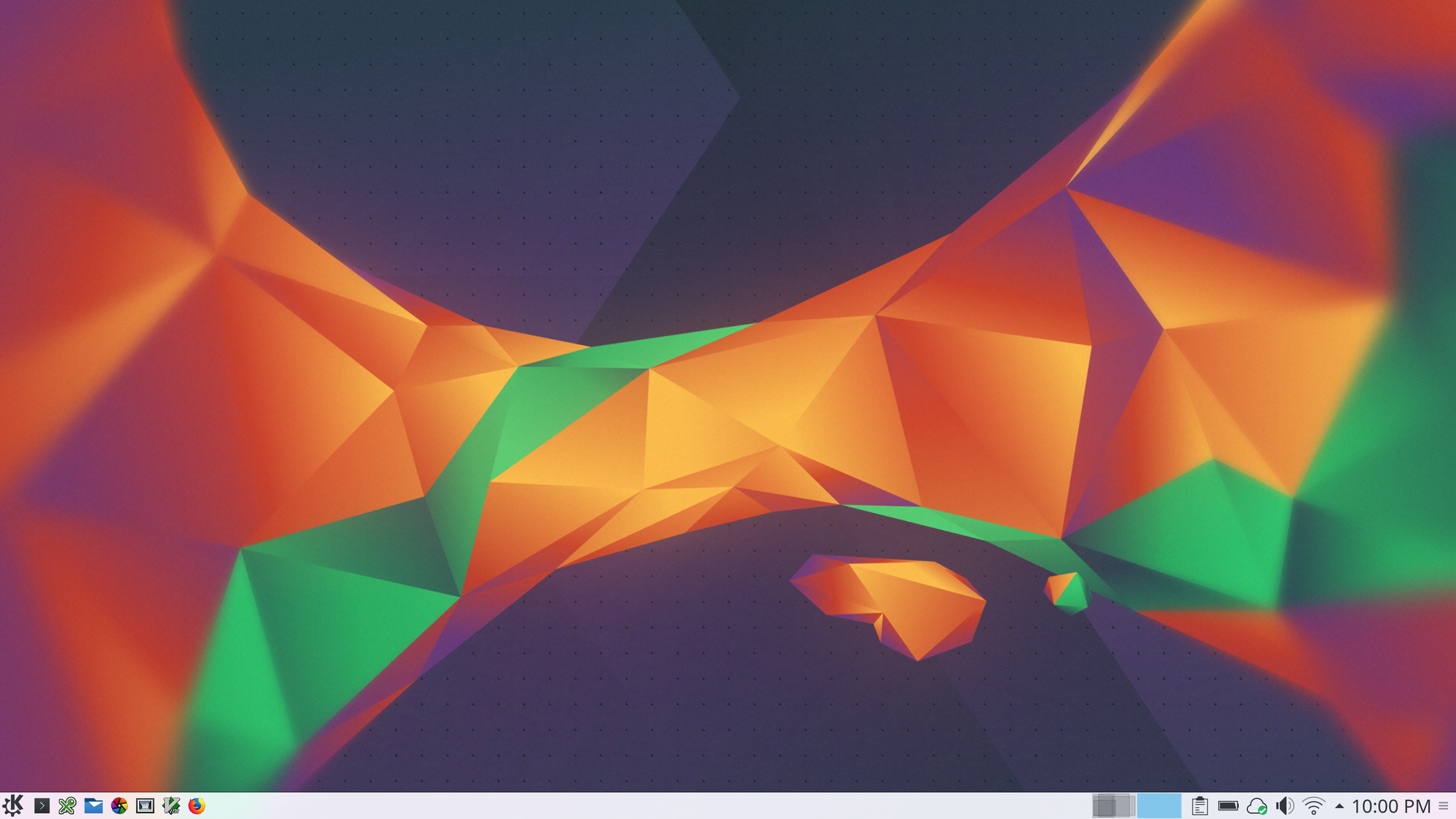How to Install Kubuntu on a Dell XPS 15
2018-04-18

Table of Contents
Overview
I recently purchased a Dell XPS 15 9560 with a 4K screen for use at home. My decision was between the Dell and a System76 Galago Pro. I knew I wanted to install Linux on it, and the System76 was very tempting as it ships pre-installed with Ubuntu, but I decided to brave the installation and configuration with the Dell due to the larger screen with better color accuracy.
I ordered the Dell with the following specs:
- Intel Core i7-7700HQ CPU
- 16 GB RAM
- 1 TB PCIe SSD
- Qualcomm Atheros QCA6174 wireless card (The product page says it should have shipped with a Killer 1535, but I'm not complaining.)
- Nvidia GeForce GTX 1050 (I'm not using this at the moment, but there was no option to order without it.)
- 15 inch 4K touch screen
I removed Windows and installed Kubuntu 16.04 using the steps below. Note that when you boot into Kubuntu from USB, everything will look tiny until you adjust the scaling and fonts.
Installation
- Boot into Windows, complete the initial setup, and apply all Windows updates.
- Save the color profiles from
C:\Windows\System32\spool\drivers\colorto external storage. - Create a Kubuntu installation USB drive, insert it into the laptop, and reboot.
- During the reboot, hold F2 to enter the UEFI settings [1].
- Change the boot sequence so that the USB drive is the first priority.
- Change the SATA operation from RAID to AHCI.
- Disable Secure Boot.
- Change Fastboot to "Thorough" in the POST Behavior section.
- Save and exit UEFI settings.
- At the GRUB screen, press "e" to edit the Linux line [2].
- Add "nouveau.modeset=0".
- Press
Ctrl-xto boot.
- After Kubuntu boots, verify all of your hardware is working properly.
- Install Kubuntu using the guided process.
Post-Installation Setup
- Change the display scaling to 2 in Settings -> Display and Monitor -> Scale Display.
- Set the font DPI to 192 in Settings -> Fonts -> Force fonts DPI.
- Set the cursor size to 48 in Settings -> Workspace Theme -> Cursor Theme to fix an issue where the cursor is tiny when hovering over window borders [3].
- Configure your wireless network.
- Apply all available updates.
- Edit
/etc/default/grub: - Install Bumblebee for power savings [5]:
- Run
sudo apt-get install --no-install-recommends bumblebee. - Reboot.
- Run
- Configure Darktable for the high DPI screen [6]:
- Add
panel_width=600to~/.config/darktable/darktablerc. - Add
screen_dpi_overwrite=250to~/.config/darktable/darktablerc.
- Add
Outstanding Issues
-
I initially tried the full installation of Bumblebee which should have worked with both the integrated Intel graphics and the Nvidia card. However, after installing and rebooting, the laptop would only boot into a text-only console. I uninstalled Bumblebee and then reinstalled using the instructions above to turn off the Nvidia card.
-
When starting up, the initial KDE login screen does not use scaling for the high DPI screen, so everything looks tiny. I'm guessing there's a way to configure this, but I haven't found it yet.
-
On rare occasions, the touchpad stops working. I've tried disabling and enabling it using the
synclient TouchpadOff=1andsynclient TouchpadOff=0commands, but it doesn't help. A restart fixes it.
References
[1] Arch Linux UEFI Info for the Dell XPS 15
[2] Ubuntu Bug Report Related to GRUB Changes
[3] Reddit Thread for Mouse Cursor Size
[4] Ask Ubuntu Thread Related to Hangs on Shutdown and Reboot